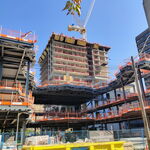Northern Light
Superstar
TFSAs are not tax free at deposit, only at withdrawal. investments grow tax free but the if the initial capital comes from income it is taxed before being deposited. Important distinction. It does allow for some very low tax growth in retirement savings though, and allows for very low taxable incomes in retirement.
Canada also has surprisingly few tax deductions and a relatively simple tax structure compared to many countries.
Most people will have deductions of some sort, mainly RRSPs, but otherwise there aren't a whole ton of eligible deductions.
A big difference between Canada and Europe is lower sales taxes - Germany has a 19% sales tax while Ontario is 13%. Corporate taxes are also much lower in Canada.
Canada does have relatively high income taxes compared to globally but the overall tax burden isn't anything crazy.
Respectfully, we will disagree, as we so often do.
First off, I specifically noted TFSA is a tax shelter (income generated inside them is not taxable), not that its a deduction/credit, so there was no need to correct my accurate statement.
Second........as someone who its fair to say is 'comfortable', I pay well less as a % of income on my tax than the sticker rate.
Its not a percent or two less.........its a lot less.
If your paying more, fire your accountant.
I would strongly advocate for a zero-deduction model, where 100% of income is taxed identically; but with a higher tax-free exemption and a lower rate structure; albeit, I'd be content to see more revenue collected as well.






